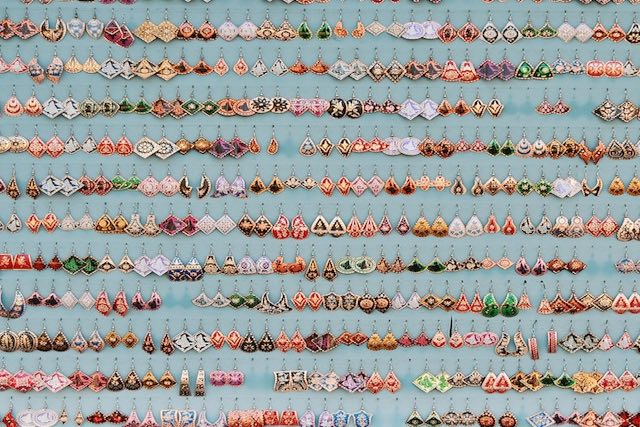Your 10 Step Guide to Importing Goods Into Australia - 2025
A guide to importing goods into Australia. Find out what you need to know before importing goods into Australia with our helpful checklist.
Importing goods into Australia can be a great way to expand what you offer to your customers, especially if you can’t find a local manufacturer. It’s important to be aware of the challenges, regulations, costs and more that come with importing from overseas.
Related: Import Guides By Product and Country

Before you order your first container, read through our handy ten-step checklist and get the knowledge you need to understand what importing involves:
1. Make sure you're aware of importing laws and government regulations
- The Australian Government has quite a few regulations you'll need to follow if you're importing goods. Fortunately, there are some great online resources to tell you what you need to know. All imports must follow government regulations. You can start by looking at the import rules from the Australian Border Force, the main agency responsible for clearing your goods through customs. Here's another helpful guide from the Department of Agriculture on areas you'll need to consider when you're importing.
2. Find out if you need a specific permit
There is no requirement for businesses or individuals to have an overall license to import goods into Australia, however you may need a permit to clear certain types of goods through customs.Several categories of goods are restricted or prohibited from import. You can find a complete list here, but in general you will be prevented or restricted from importing dangerous chemicals, pharmaceuticals, narcotics, certain foods, weapons, tobacco, and some biological materials. Check the list for a complete guide and information on who to contact to request permission. Importing industrial chemicals also requires additional registration.
3. Learn if your goods will be subject to other import conditions
The Department of Agriculture manages import of goods which may pose biosecurity issues, and offers tools to understand if your import will be subject to restrictions, called the Biosecurity Import Conditions system (BICON). If you're importing plant, animal (including live plants and animals), mineral, or human products for example, they will almost certainly need to be quarantined and treated for pests or other biological factors. Use BICON to determine if you'll need additional steps to import your specific goods.
4. Learn about the tariffs and taxes you'll need to pay
- You will almost certainly have to pay some taxes and tariffs on your imported goods. Spend some time learning about:
- Import entry costs and processing charges which you can find here.
- Understanding how to value goods for customs duty taxes.
- Find out if you have to pay goods and services tax.
- Getting the right tariff classificationfor your goods.
- You'll also need an Australian Business Number to claim tax credits and defer tax payments. You should contact your taxation officefor more information.
5. Understand the charges for import duty, and goods and services sales tax
- Here's an estimation of the types of charges and fees you'll need to pay:If your goods are valued at over $1,000 AUD, you will almost certainly have to pay import duty and GST on them.
- Import entry costs and processing charges– Customs will charge you a fee for processing your goods. Costs vary depending on the value and type of goods involved
- Customs import duty is calculated as a percentage of the price you paid for the goods. The duty rate can range from 0% to 10%, but the rate for most goods is 5%.
- Goods and services sales tax (GST) will also be charged based on the following:
- The valuation of the goods plus;
- The customs import duty amount plus;
- The cost of insuring the goods and transporting them to Australia.
- GST is charged at 10% of the final amount.
- This is just intended as a general guide – These charges can be influenced by what you're bringing in, excise taxes, free trade agreements, and many other factors. Please do check with customsfor your individual circumstances.
6. Take advantage of any concessions
Some types of goods are eligible for concessions(reducing the amount of duty you need to pay). You can find out more information through this page.
7. Understand free trade agreements (FTAs)
- Australia has a number of free trade agreements with other governments and countries around the world. These are designed to ease international trade barriers and reduce import costs. There's lots of very useful information on FTAs here, based on the country you're importing from.
8. Find out about other costs
- There are several other costs you'll need to be prepared for:
- The cost of buying the goods in the first place.
- Shipping and logistics costs for overseas and domestic shipping.
- Freight handling charges levied by airports or seaports.
- Insurance and other costs.
9. Make sure your goods are labelled accurately
- At a minimum, imported goods must be properly labelled. This includes the country of manufacture and origin, a true description of the goods, a sender's address, and a recipient's address. The labels should be in English, attached to the goods in a prominent position and be clear and easy to read.
10. Avoid paying too much for currency exchange
- Importing comes with a lot of challenges including paying overseas suppliers. If you need to transfer money overseas, consider using a specialist service for overseas payments, like Wise or OFX
- Wise offers overseas payments to 160+ countries, with the mid-market exchange rate and low, transparent fees. Set up your payment online or in the handy Wise app, and get your money moving in double quick time.
- To use OFX, click on this link for efficient payments in 50+ currencies, with no transfer fee for payments of 10,000 AUD or more. Exchange rates include a markup. OFX transfers can be arranged online, in-app or by phone, 24/7, so you'll always be able to talk to a broker if you need support with your payment.
How much does it cost to import to Australia?
When you import goods into Australia there are several different costs to know about.
Firstly, imported goods are likely to be liable for duties and taxes unless an exemption or concession applies. You may also need to pay GST on imported items. Import duty is normally 5% - 10% depending on the items, and GST is charged at 10%. Additional import processing fees also apply.
When you’re working with overseas suppliers you’ll also need to think carefully about how best to pay in foreign currencies without being hit by high currency conversion fees and poor exchange rates. Using a specialist in currency conversion and international payments, like Wise or TorFX can help keep down the costs overall. With Wise you get the mid-market exchange rate on transfers to 160+ countries, with low, transparent fees - while TorFX uses a small exchange rate markup and no separate transfer charge.
Requirements when importing goods into Australia
Importing goods into Australia is overseen by various government bodies, depending on the specific goods you’re bringing into the country. The Australian Border Force is a good place to start if you’re learning about the rules for importing items, and the Department of Agriculture also has a role to play in importing items which may pose a biosecurity risk.
The requirements for importing items into Australia can vary quite a bit depending on the type of goods you’re importing. The basic requirements include:
- Imported goods must be correctly labeled
- Imported items should be marked with country of origin
- If you have an ABN this must be marked on the imported goods
- Imported goods must show their tariff classification
- Some imports require a license or permit
Because the rules for importing goods into Australia can be fairly complicated, the Australian Border Force recommends that you use the services of a customs broker who is familiar with the item you’re trying to import, to help you navigate the process.
Do you need a license to import goods into Australia?
There’s not a general requirement for all importers to have a license - whether or not you need a license or permit will depend on the types of item you’re trying to bring into the country. Getting the advice of a customs broker can help you understand all the rules and how they apply in your unique situation.
Where do I need to declare the goods I am importing?
Generally you must declare the import of goods into Australia. There are several different processes for this, depending on the value of goods and whether they’re being warehoused or released for consumption. The Australian Border Force recommends that newer or infrequent importers use a customs agent to complete this step, to make sure everything is done correctly.
Usually you must submit one of the following forms:
- Import Declarations (N10)
- Self-Assessed Clearance (SAC) Declaration
- Warehouse Declarations (N20)
You can submit the required form using the Integrated Cargo System (ICS) or in hard copy at a border force desk. You’ll then need to pay any outstanding taxes, duties or costs before your items are released.
Any restrictions?
If you’re importing restricted items, or items like tobacco or alcohol, where additional duties may be required, you’ll need to follow a more complex process for declaration. Have a customs agent help in this case to make sure you get everything completed in good time.
How much can I import without paying duty in Australia?
You’ll need to pay customs duty and taxes on imports of goods worth over 1,000 AUD. Some categories of import like alcohol and tobacco are also liable for taxes and fees, regardless of the value of your shipment.
Conclusion
Many Australian businesses choose to import goods for sale here, both to bring new products to market and to increase their profitability. You can learn a lot about getting started with importing goods through the resources provided by the Australian Border Force. As there are quite a few rules and requirements, including permits and licenses for some types of import, you’ll need to make sure you’re very clear on the processes before you get started. Or, you could consider importing through a customs broker who is experienced in supporting imports into Australia.
In either case, you’ll need to think carefully about the costs of importing items to Australia, including the best ways to manage currency conversions and overseas payments to suppliers. While it’s pretty much inevitable that you’ll need to pay tax and duty, you may be surprised by how much you can save on the costs of currency conversion if you use a specialist in international payments like Wise, OFX or TorFX, when you send payments overseas.
Import Guides By Product











